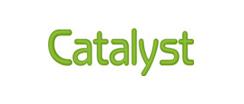- View more resources from this publisher
 Gatsby Science Enhancement Programme
Gatsby Science Enhancement Programme
Catalyst Volume 15 Issue 1: Full Magazine
Articles in this issue of Catalyst include:
Early in 2003, researchers in the Arctic reported that radioactivity was being spread among wildlife species in ways that no one had detected before. Where does this radioactive contamination come from?
This article explores pursuing a career in the dentistry profession.
Oxygen is essential for most respiration, which goes on in all live cells, all living things, all the time. This article looks at how organisms get the oxygen they need from their surroundings and how it reaches cells. It also explores how oxygen transport is monitored, which is vitally important in medical care.
This article aims to identify, assess and control the risks in practical chemistry experiments.
Wood is a renewable source of energy. Could it be used to generate electricity in the UK, and what are the advantages and disadvantages?
This article looks at the life and work of the physicist Robert Hooke.
This article investigates how a Geiger counter works.
Catalyst is a science magazine for students aged 14-19 years. Annual subscriptions to print copies of the magazine can be purchased from Mindsets.
Show health and safety information
Please be aware that resources have been published on the website in the form that they were originally supplied. This means that procedures reflect general practice and standards applicable at the time resources were produced and cannot be assumed to be acceptable today. Website users are fully responsible for ensuring that any activity, including practical work, which they carry out is in accordance with current regulations related to health and safety and that an appropriate risk assessment has been carried out.





